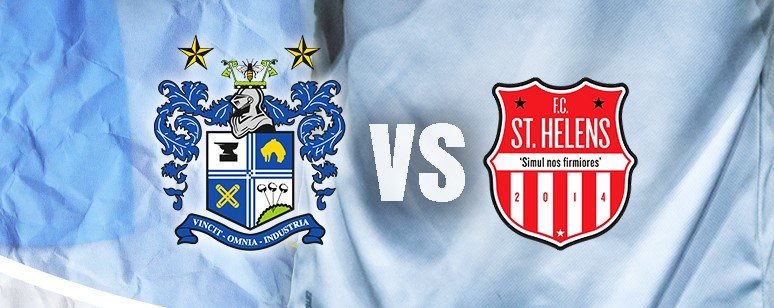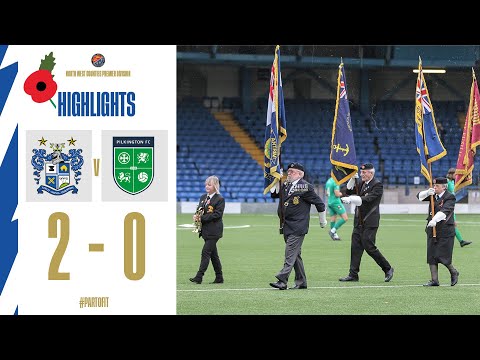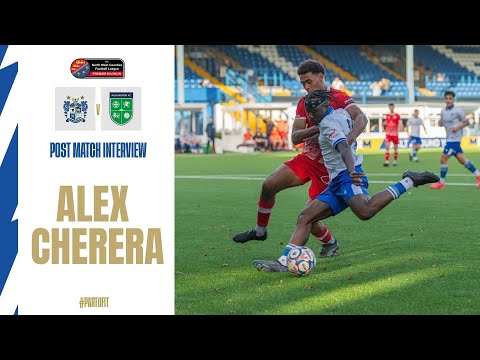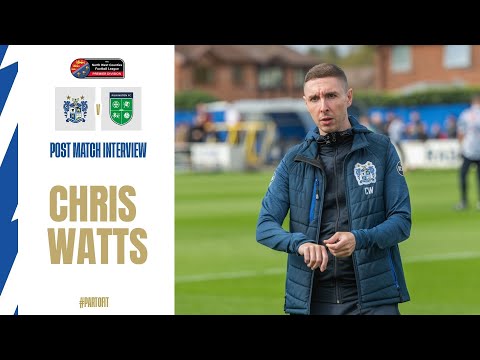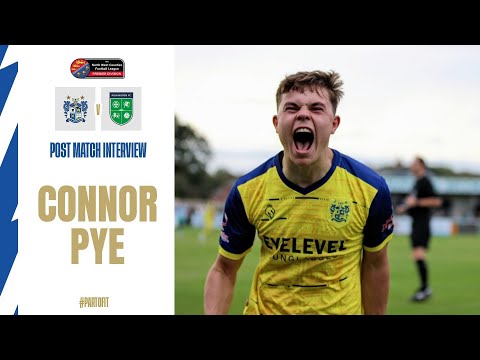- 331 views
Latest News and Articles
“It’s always good to get recognised for what you’ve been doing,” Pye speaks of the accolade, in a month he scored twice and was apart of three cleansheets.
He then gave us his thoughts on yesterday’s game saying, “It was tough and they’re a good team they came out and tried to play football and they’ve got some really good individuals in their team but the early goal we got helped us a lot and we changed a bit in the second half, but we got another goal.”
Pye added: “It’s about getting momentum because we in a bit of a tough period where the games are coming thick and fast but it’s just about keeping that momentum and there’s another tough game on Tuesday and that’s a big game.”
Looking ahead to Tuesday’s game against FC St Helens, Pye said: “It’s going to be a really tough game there going to play football there a team that is organised and it’s the biggest game so far but if we win there hopefully, we can keep that momentum going into Christmas.”
View the full article
- 301 views
“I thought we did okay in spells but it was a tough game in the most parts,” First Team Analyst, Chris Watts reflected on the game.
“It felt like one of them games where it was going to be our undoing if they got anything from this but it was good to get the second one and see it out but it was one of the most controlled games we’ve had at home but I thought we were a bit wasteful at time down at their end and on another day we get a few more and we didn’t really test the keeper but you can’t be too displeased.”
DJ Pedro scored on his home debut, Watts added, “I’m really pleased for him as he’s worked really hard, battled really well, and won his headers. He was a nuisance all day, and I was pleased to see him get one, but I’m pleased to see him on the score sheet, and hopefully, we’ll see more of him.”
Josh Gregory and Sam Coughlan both left the pitch through injury, Watts gave an update on their condition.
“Josh is at the hospital and we think it’s just a dislocation we think he’s just landed awkwardly after the header but we think he’s just dislocated his shoulder so probably a while before we see him and for Sam, I think he ran into the same lad who got underneath Josh so we’re going to send him for an X-ray to see if there is a problem with his hip as that’s where there’s a lot of pain so there two we’re going to have to keep an eye on.”
“Bobby [Carroll] has just been in with the physio now to see where he’s at and we’ve lost two central midfielders today so that’s something we’ve got to look at with the outcome of Josh and Sam but hopefully we’ll get Bobby back for Tuesday and we’ll see how his ankle reacts within the next 24 hours.”
Chris finished the interview by giving his thoughts on the upcoming game against St. Helens, “It’ll be a really tough game. There’s a hardworking side, and he’s had that group together for quite a while now and are running a quest of a wave from getting promoted last year, but it’ll be another tough game we’ll look at, and we’ve got to perform on the day and take the three points.”
View the full article
- 678 views
At the other end of the pitch The Shakers back line remained solid as rock, claiming their third clean sheet in a row, seventh of the season.
We also marked Remembrance Day, taking a moment to remember all those brave men and women who have lost their lives in many conflicts and wars around the world and in service to our country at home.
Theres not much time to revel in our win as the games will come thick and fast over the coming weeks. It’s a quick turnaround as our league campaign continues on Tuesday night when FC St Helens visit Gigg Lane for what is set to be a firecracker of a fixture under the floodlights at Gigg lane.
We have a huge two months in November and December which could set us up for the season and we need you to get down to Gigg! Be #PartOfIt and roar the lads on to victory.
Tickets and hospitality passes for all upcoming fixtures can be purchased here.
You can relive all the action from Saturday and hear post match reaction from Chris Watts, Connor Pye and Alex Cherera below.
In Opposition – FC St Helens
FC St Helens currently sit in 8th in table following their opening 19 games of the season, with 10 wins, 5 draws and 4 defeats. They have found the net 4 times this season with goalkeeper Joe Mason having to pick the ball out of the back of his net 29 times.
Their top scorer Joseph Barker has scored 14 times this season, including a hattrick against Stockport town, picking up 5 opponents MotM awards.
Formed in 2014, FC St Helens focuses on developing local talent and upholding strong values on and off the pitch.
Starting in the West Cheshire League, they moved to the Cheshire League, achieving promotions and strong finishes. Despite COVID-19 interruptions, they won the Lancashire County Amateur Shield and the Cheshire League Premier Division.
Overcoming ground grading issues, they were promoted to the NWCFL in 2022. Under manager Mike Smith, they secured the First Division title and the Champions Winners Cup in the 2023/24 season, culminating an impressive rise for the club.
On the Day & In the Ground
Our Matchday @ Gigg guide is available to read to find out everything you need to know going on in and around the ground.
Match Tickets can be bought online HERE.
Match Coverage & Live Stream
If you are unable to make it to the action at Gigg Lane, we’ll have all the live coverage across our media platforms.
Live Stream: The game will be broadcast live from Gigg Lane via our new streaming service accessed via TicketCo. The cost is £7.29 (inc.VAT & fees).
Season ticket holders can gain access to live streams for FREE as part of their season ticket purchase. Enter your 5-letter reference code from your season ticket receipt in the ‘Promocode’ box and click apply.
Your link to access the game will be provided in your receipt following the transaction.
Live stream tickets will be available to purchase very soon from our ticket webpage HERE.
Keep up-to-date with all our video content via the club’s YouTube Channel. Click to subscribe and never miss highlights and match reaction across the season.
Audio Commentary: Roch Valley Radio will be providing commentary for this game. Join the team from the press box at Gigg Lane. Click here ahead of kick-off to listen live. Audio commentary will be provided for every game of the season, so you will never miss a piece of the action.
Social Media: Our team will also bring you in-depth text commentary via the club ‘MatchDay Live‘ Twitter feed, with team news and half time and full time updates available also on Facebook and feel like you are there with our match galleries and imagery available over on Instagram.
Whatever the weather, wherever you are across the globe, we have you covered.
Up the Shakers!
#ShakersTogether | #BuryFC | #PartOfIt
View the full article
- 567 views
- 402 views
Cherera said: “It was a good game, and we did well you know we had possession, controlled the game and to be honest we deserved to win so I’m happy with the performance we put out there.”
He than spoke on the focus on the league and the positives of the win and clean sheet streak post the FA Cup exit “Big positives but we need to win every game as we’re just focusing on the league now and soon we’ll be playing again so we’ve only got 2 days to focus and get back into shape so it should be alright you know and focus on the league.”
Cherera than spoke about the weeklong gap between Colne and Pilkington and the benefit it had saying “I think it is nice to have a break you know with the Saturday/Sunday than Tuesday games it was a bit too much but soon will be back to training twice (in between games) and that’s just what we need for games on Saturday/Sunday.”
Looking ahead to Tuesday’s game, Cherera added: “That’s a big game a massive game as St Helens are in good shape so we need to be up for it and we need to get the 3 points as it’s a big game next Tuesday.”
View the full article
- 460 views
- 428 views
- 283 views
- 256 views
